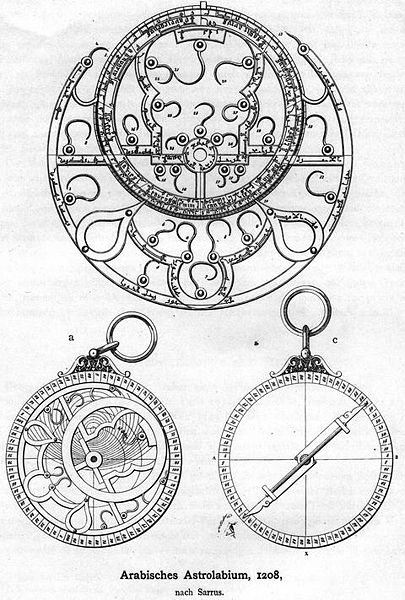Astrolabes serve two purposes. First, they are useful as an astronomical tool, especially for finding a ship’s latitude. But second, they are works of art in themselves. Besides having to be precise, many are beautiful. They are even seeing a resurgence in popularity as collectors lap up even those made by modern manufacturing processes because of their aesthetic appeal. Now, a new paper adds to their uses – a self-referential ability to mark what year they were made by the patterns of the stars they reference.
Continue reading “The Positions of Stars on an Ancient Navigation Device Tell us When it was Made”Astrolabe
[/caption]
An astrolabe is an ancient tool used in solving problems that involve time and the position of the Sun and stars. Astrolabes can be used in timekeeping, surveying, geography, and astronomy to name a few disciplines. One of its most well-known uses is navigation. Using an astrolabe, you can determine how the sky looked at a certain point in time at a specific place. Since it really is a visible map of the sky, it has proven extremely helpful in astronomical equations.
The astrolabe was invented sometime around 200 BC, and the Greek astronomer Hipparchus is often credited with its invention. A number of Greek scholars wrote in-depth treatises and texts on the astrolabe. Eventually, the tool was introduced to scholars in the Islamic world. They soon started using the instrument, mainly for navigation, and wrote many texts on the instrument themselves. Texts were also written on the subject in India, showing the extent to which this tool was used around the world.
The astrolabe is constructed of a hollow disk that is known as the “mater.” The mater can hold several flat plates that are known as “tympans” or “climates.” Each tympan is made for a specific latitude. The mater is marked indicating hours, degrees, or both measurements. The rete is the actual map of the ecliptic plane and has several pointers to indicate the brightest stars. You can think of the rete as a star chart. Often, different scales are engraved on the back of the mater to help in calculations. The engravings differed, and some of them included trigonometric scales and a calendar to convert between the day of the month and the position of the Sun according to the astrolabe. The alidade is attached to the back of the astrolabe. The alidade is used to take a star’s altitude.
The first universal astrolabe was invented by the Islamic scholar Abu Ishaq Ibrahim al-Zarqali. Unlike its predecessors, this astrolabe could be used at any location around the world instead of only at a specific latitude.
There are a number of astrolabe collections around the world, and you can still purchase astrolabes from a variety of locations. A later variation of the astrolabe is the spherical astrolabe, which looks like a sphere surrounded by a number of rings. The spherical astrolabe was also used in astronomy. The astrolabe is a predecessor of the sundial, which is still common today as an ornament in many gardens.
Universe Today has a more in-depth article on the armillary sphere and one on ancient astronomy.
For more information on astrolabes, you may want to check out astrolabes and the mariner’s astrolabe.
Astronomy Cast has an episode on choosing and using a telescope.
Source:
Wikipedia


